The tserkva in Ulucz definitely is ranked among the most attractive and most beautifully situated churches in Poland. It was built on top of a hill named Dubnyk, in a large village which once existed here. Initially, until 1744, there was a monastery here. In the subsequent centuries it was used as a branch of the parish tserkva in Ulucz, and it held religious celebrations only occasionally, most importantly for the feast of Our Lord’s Ascension. This tradition is upheld today. The church is the only remnant of the monastery. The size of the area in the past comprising the monastery nowadays is only reflected by the stone wall surrounding the tserkva and the cemetery. According to historical records the tserkva was built in 1510–1517. On the other hand, dendrochronological analyses showed that the collected samples of wood date from 1659. The tserkva was renovated and remodelled a number of times.
This is a log structure with stone foundations, oriented towards the east, and built from fir wood; it comprises three parts, including a chancel closed with walls on three sides. The whole building is covered with a multi-pitched roof. On the western side, at the entrance to the narthex we can see the protruding eaves supported by eight pillars with angle braces. Next to the chancel there are two small rooms – diakonis and protesis. There are two entrances to the building, on the western and southern side. Both portals feature decorative ogee arches. The chancel and the narthex are covered with log ceilings, and above the nave there is an octagonal dome with pendentives. Above the narthex we can see interesting barrel-vaulted ceiling. The outer walls are covered with shingles. The bottom sections of the walls in the oldest churches were not shingled; to the contrary space was left between the roof and the body of the building to ensure good ventilation. This concept was abandoned in subsequent centuries.
Inside, on the northern wall, there is a valuable 17th century wall painting depicting the Passion of Jesus. The interior once held a magnificent iconostasis (from 1682) and the Royal Doors from the 1700s. The iconostasis today is in the Museum of Folk Architecture in Sanok.
During the repairs in the 1960s, the windows which had been added in the northern wall in the 1700s, were concealed. It is a common belief that the oldest tserkvas of this type had no windows on that side since these did not provide much light; besides north was said to be the side of the world from which evil came.
Unveiled in 1990 in front of the tserkow, the cross and plaque commemorate Mykhailo Verbytsky, a Greek-Catholic priest, and prominent Ukrainian composer of liturgical music, who authored the music of the current State Anthem of Ukraine. The inscription on the plaque says that this renowned composer was born in this village.
There are a few legends connected with the tserkva. According to one of them, when preparations for the construction were being made, the building materials were stored at the foot of the slope where the church was to be located. However, at night some invisible hand in a mysterious way transported the materials to the top of Dubnyk. The wood was brought back down three times, and it returned to the top three times. Eventually, people agreed that it was God himself who showed the location that was pleasing to him, and the tserkva was built on top of the hill. Today we can see a small shrine at the site where they tried to keep the building materials.
According to another common belief, on the slope there was a spring with healing water which attracted pilgrimages of sick people from the area. However, the miraculous spring disappeared along with the former inhabitants of this land.
Another legend says that the original tserkva in Ulucz was swallowed by the earth and it is only on the Ascension Day that one can hear the voices of the bells coming from underground.
Today the tserkva is a branch of the Museum of Folk Architecture in Sanok.
Photo: Krystian Kłysewicz, Małgorzata Tylka
Gallery
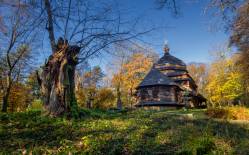
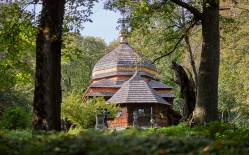
Recommended venues on the Trail
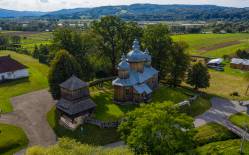
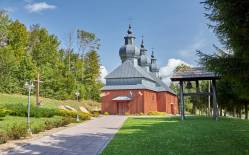
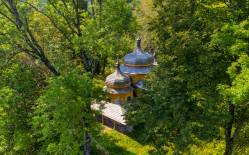




This website has been modernized with the financial support of the European Union under the Cross-Border Cooperation Programme Poland-Belarus-Ukraine 2014-2020. The responsibility for its content lies solely with the Podkarpackie Regional Tourism Board and cannot, in any case, be treated as a reflection of the position of the European Union, the Managing Authority, or the Joint Technical Secretariat of the Cross-Border Cooperation Programme Poland-Belarus-Ukraine 2014-2020.









